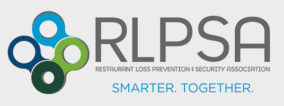10 Ways to Eliminate Slip & Falls
It happens every day. People slip and fall. Sometimes they get up without any further consequences; others can suffer serious repercussions, such as neck injuries, broken arms or legs, cuts, back strains, even death. When someone is injured in a fall, lawsuits often follow. Many of these lawsuits claim owner negligence. The Liberty Mutual Safety Index rates same-level falls as one of the top ten causes of “serious workplace injuries” in the U.S.
Restricted Budgets Impact Safety
The food service industry employs a significant portion of the nation’s workforce and services millions of people each year. These numbers make restaurants particularly vulnerable to safety issues. The tight economy has brought a decrease in safety precautions. Businesses falling on tough times have relaxed their vigilance on safety…floors are left wet and dirty due to fewer employees to clean up spills and leaks, deep cleaning has been postponed because of a lack of resources, regular cleaning services have been discontinued as profits have fallen, and efforts to put up relevant signage has been put off until sometime in the future.
Of course, a tight budget is not a good excuse to turn a blind eye to safety issues. In fact, hard economic times is exactly when companies should look more closely at safety procedures that will strengthen a workforce, prevent lawsuits, or forestall other actions that may end up costing the business more money in the long run.
Employees are the First Line of Defense
Training all employees to identify and eliminate problem areas before accidents happen is important. Training should include how to identify potential safety issues and how to properly use the cleaners and cleaning tools provided to eliminate the hazards. Safety training can also include instruction in first aid, injury protocol, proper ways to lift and handle materials, etc. Managerial support adds to the probability that an establishment’s policies and procedures will be carried out.
By starting with your employees first, you have dry floors, well-lit areas, and no tripping hazards.
Train and expect for the following to increase the safety of the store within just a few shifts, and minimize the costly risks of slip-and-fall hazards.
- Slip-Resistant Shoes: Require employees to wear sturdy shoes with slip-resistant soles. The National Floor Safety Institute (NFSI) reports that improper footwear causes about 24 percent of slips and falls.
- Flat Mats: Make sure all mats and rugs are clean and dry, both on top and underneath. Teach employees how to smooth out all buckled areas throughout their shift. Choose NFSI-certified mats. The mat needs to be appropriate for the floor type. For example, use non-skid mats and no-skid waxes on flooring surfaces.
- Clear the Path: Remind employees to keep pathways clear of empty boxes, stock, etc.
- Equip for Safety: Empower employees with the right tools, so they can keep floors and work surfaces dry. Provide an ample supply of dry rags and mops for taking care of food or liquid spills. Be sure to provide cleaners that de-grease surfaces, etc.
- Whistle While You Work: Expect a ‘clean-as-you-work’ approach throughout every shift. Highlight the change in strategy depending on weather (see item #6).
- Rain or Shine: Set precautions in place for bad weather: rain, snow, sleet, ice, humidity. For example, be sure employees have the necessary signage to post when floors are wet from the outdoor elements. Remind employees that once floors are dry from mopping or weather, remove the signage to avoid a tripping hazard.
- Safety Lights the Way: Ensure that all electrical wiring is safely out of the way to prevent tripping. Provide proper lighting in all areas such as dining rooms, storage rooms, and stairways. Depending on the store processes, make sure employees have a way to notify management of burned out or broken light sources throughout the shift, so it can be quickly replaced.
- See Safety: Safety violations must be taken seriously by managers and administration. Policies should be communicated to all employees and procedures should be posted in visible areas. Emphasis should be placed on how to prevent spills and falls.
- Bring in the Expert: If your budget or scheduling allows for it, you can appoint or hire a safety coordinator. This person should be tasked with developing a preventative approach to workplace safety, including conducting safety audits, establishing safety policies and procedures, offering training, and evaluating outcomes of the safety plan.
- Safety Audit: Auditing the workplace situation from a safety standpoint, including COF measurement, employee buy-in, and hazard identification can help establish relevant policies and procedures and viable best practices. For example, Russell Kendzior of NFSI says measuring the slip resistance of the restaurant floor is a must. Determining the coefficient of friction (COF) will help you ensure safer floors and facilitate best practices that will decrease the number of slips by both guests and employees.
Know Thy Safety
Knowing the risks to workplace safety, identifying the factors that can eliminate those risks, and making sure employees are knowledgeable and trained to carry out the safety-action steps enables restaurant managers and owners to mitigate serious injuries due to slips and falls while protecting their customers and employees.
